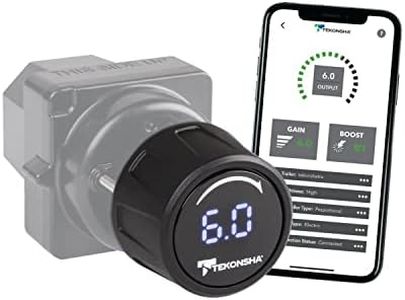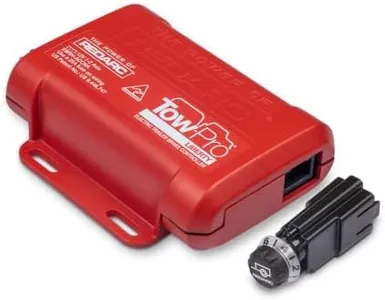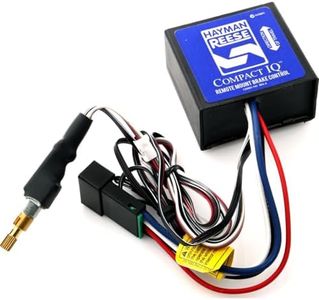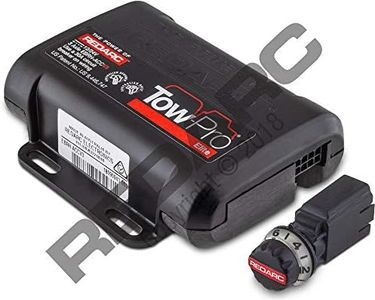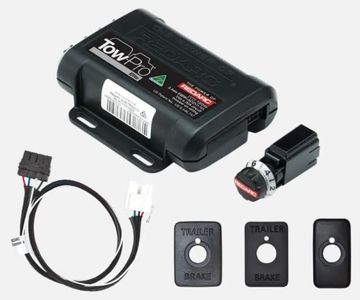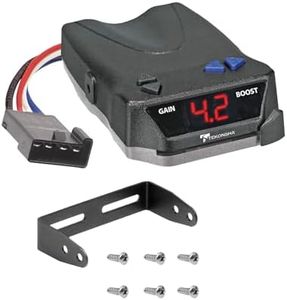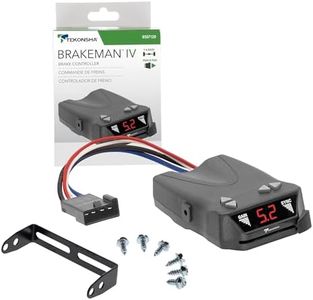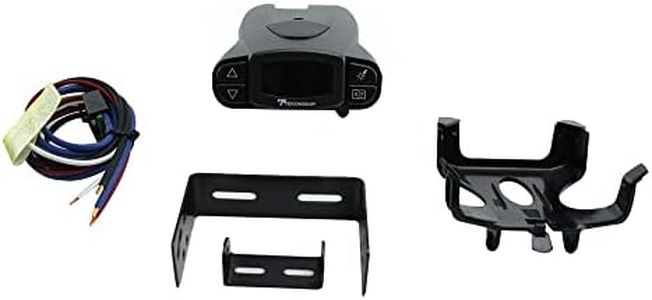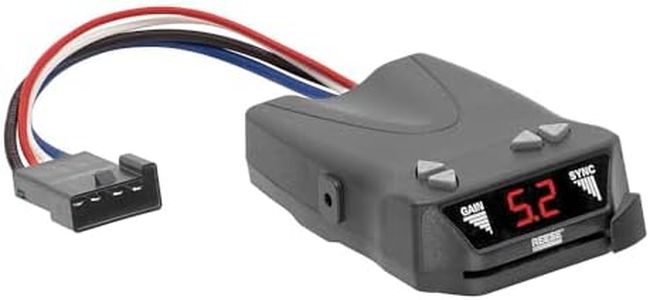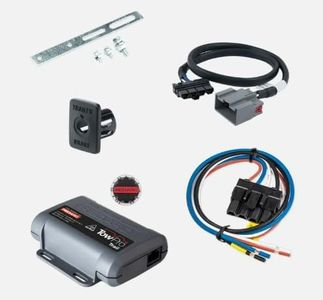We Use CookiesWe use cookies to enhance the security, performance,
functionality and for analytical and promotional activities. By continuing to browse this site you
are agreeing to our privacy policy
10 Best Electric Brake Controllers
From leading brands and best sellers available on the web.Buying Guide for the Best Electric Brake Controllers
Choosing the right electric brake controller for your towing setup is important for safety and performance. Electric brake controllers are used to synchronize the braking of your trailer with your vehicle, which helps prevent swaying and ensures smooth stops. The key is to match your towing needs and the type of trailer you have with a suitable controller, while making sure installation and operation are straightforward for you.Type (Time-Delayed vs. Proportional)The type of brake controller you choose determines how it sends braking power to your trailer. Time-delayed controllers send a preset amount of power after you hit the brakes, regardless of how hard you press the pedal. This is simpler and cheaper, but braking may feel less natural. Proportional controllers, on the other hand, sense the slowing movement of your tow vehicle and apply trailer brakes with a matching force. This leads to smoother, more controlled stops. If you tow only very occasionally and don't mind a less sophisticated feel, time-delayed might suffice. If you tow regularly, have a heavy trailer, or want the safest and smoothest braking, a proportional controller is a better fit.
Number of Axles SupportedThis spec tells you how many trailer axles (or sets of wheels) a controller can handle, which is crucial for proper braking. Some controllers support only one or two axles, while others can handle more. Light, small trailers may need only one or two-axle support, but larger trailers with more wheels require controllers that can handle three or four axles. Match this number to the total number of axles on your trailer to ensure all brakes engage as needed.
Installation MethodBrake controllers can be hardwired into your vehicle, plugged into a factory wiring harness, or even use wireless connections. Hardwiring is more permanent but might require professional installation, while plug-and-play options are easier for most vehicle models that have the right connector. Wireless options may allow you to move the controller between vehicles. If you're comfortable with DIY installation or want to frequently switch vehicles, an easy plug-and-play or wireless model can save time and hassle. Otherwise, a hardwired unit is often more secure and reliable for long-term use.
Adjustability and ControlsGood controllers let you adjust settings like braking power and sensitivity so you can fine-tune how the trailer responds to your vehicle braking. Some have simple knobs or buttons, while others feature digital displays for precise adjustments. For occasional, light loads, you might get by with basic controls, but for heavier towing or diverse road conditions, look for models with more adjustability so you can adapt on the go. Think about how comfortable you want to be adjusting these settings while driving.
Display and AlertsDisplays can show information like braking level, trailer connection status, or error codes for troubleshooting. Audible or visible alerts warn you if something isn't working correctly. Some basic controllers have minimal display, while premium ones are more informative. If you're new to towing or want extra reassurance, a model with a clear display and helpful alerts can provide peace of mind and help solve problems quickly if they come up.

